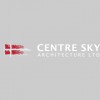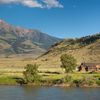
Brett Potter, a Bozeman native, is a licensed Architect in the states of Montana and Idaho and a member of the American Institute of Architects. He received his Bachelor's of Environmental Design from the University of Colorado, Boulder, and his Masters of Architecture from the University of Colorado, Denver.
Brett's work has been featured in Architectural Record and his designs have earned Montana Chapter AIA design awards. Brett enjoys skiing year round in Montana, playing music, and spending time with his family. At Yellowstone Architects, we work hard to design great buildings and strong and lasting relationships.
Brett's work has been featured in Architectural Record and his designs have earned Montana Chapter AIA design awards. Brett enjoys skiing year round in Montana, playing music, and spending time with his family. At Yellowstone Architects, we work hard to design great buildings and strong and lasting relationships.
Services
Early in the process we use 3D massing studies to evaluate roof options, the design aesthetic, and how the project interfaces with unique site features. As the design develops, we start evaluating architectural detailing and exterior design elements. The final phase of design involves detailing roof systems, load bearing wall systems, window systems, and other architectural elements and features.
Teton Valley, 2007: This custom home won an AIA Merit Design Award for its integration with the surrounding environment and minimal footprint on the landscape. It is a comfortable get away home with an impressive Grand Room looking out over Teton Valley. The floor plan provides open space for a sense of community, but also privacy for each bedroom for when it is time to retire.
This project replaced four condemned alley facing wooden structures with beautifully detailed metal balconies. The new balconies were powder coated dark bronze and set off with silver turn buckles and decking to recreate the detailing and styling appropriate to the vernacular architecture of the early 20th century.
For community-scale projects, private homes, or even a solar-powered irrigation pump set far from any road, the sustainability landscape of the Inter-mountain West is evolving fast.
Consider a sampling from today's jargon: optimal solar orientation, natural day-lighting and ventilation, passive solar heating, photovoltaic (solar-electric) systems, a highly-insulated building envelope, poured earth construction, recycled and regionally sourced building materials, motorized window blinds, site sensitivity, low-use plumbing fixtures, grey water retrieval, night flushing, rainwater collection, vegetated roofs, native planting, native landscaping.
Consider a sampling from today's jargon: optimal solar orientation, natural day-lighting and ventilation, passive solar heating, photovoltaic (solar-electric) systems, a highly-insulated building envelope, poured earth construction, recycled and regionally sourced building materials, motorized window blinds, site sensitivity, low-use plumbing fixtures, grey water retrieval, night flushing, rainwater collection, vegetated roofs, native planting, native landscaping.
To ensure that you benefit from 100% of the electrical energy that your solar system produces, you need to apply to your utility company for a 'net-meter', which they will install for you at no additional cost. The net-meter will spin backward and the number on the dial will actually decrease when the solar array is producing more energy than your house is using, and then operate as a normal meter would at night or on a cloudy day.
Reviews

Be the first to review Yellowstone Architects.
Write a Review
